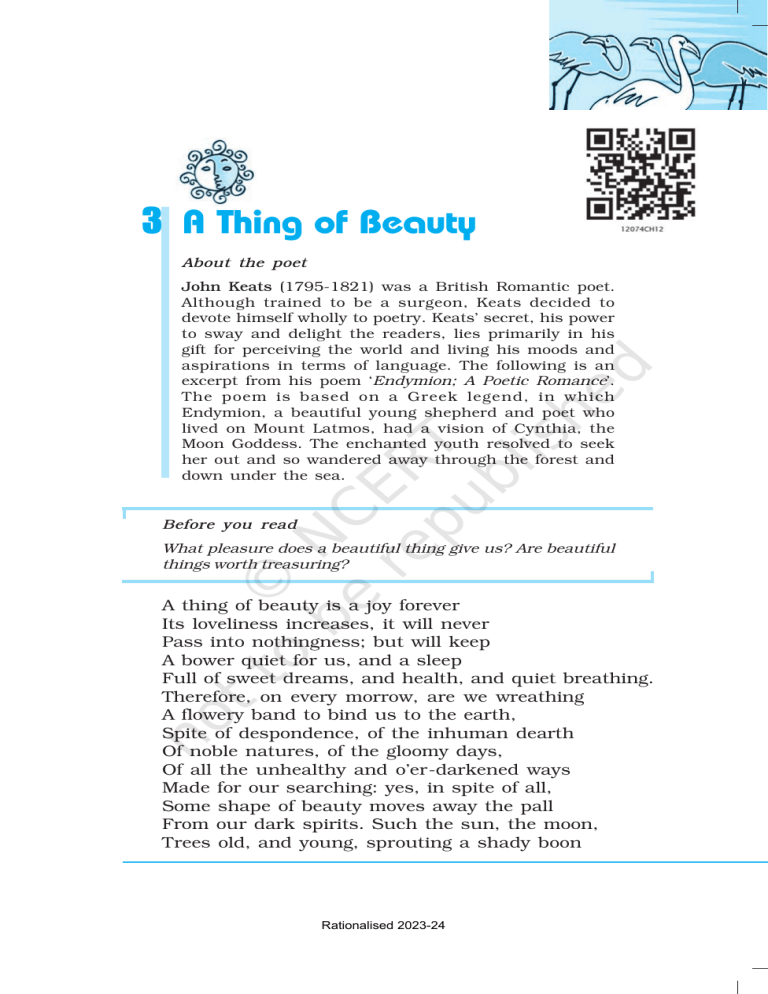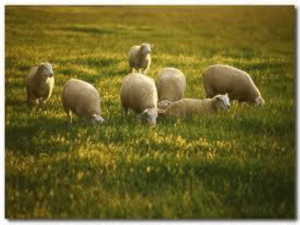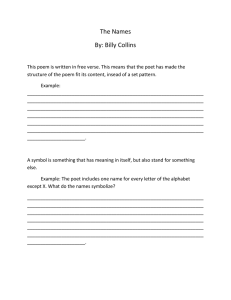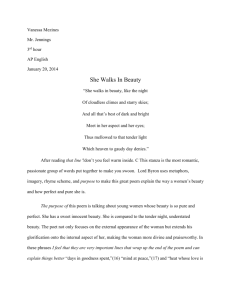
3 A Thing of Beauty About the poet John Keats (1795-1821) was a British Romantic poet. Although trained to be a surgeon, Keats decided to devote himself wholly to poetry. Keats’ secret, his power to sway and delight the readers, lies primarily in his gift for perceiving the world and living his moods and aspirations in terms of language. The following is an excerpt from his poem ‘Endymion; A Poetic Romance’. The poem is based on a Greek legend, in which Endymion, a beautiful young shepherd and poet who lived on Mount Latmos, had a vision of Cynthia, the Moon Goddess. The enchanted youth resolved to seek her out and so wandered away through the forest and down under the sea. Before you read What pleasure does a beautiful thing give us? Are beautiful things worth treasuring? A thing of beauty is a joy forever Its loveliness increases, it will never Pass into nothingness; but will keep A bower quiet for us, and a sleep Full of sweet dreams, and health, and quiet breathing. Therefore, on every morrow, are we wreathing A flowery band to bind us to the earth, Spite of despondence, of the inhuman dearth Of noble natures, of the gloomy days, Of all the unhealthy and o’er-darkened ways Made for our searching: yes, in spite of all, Some shape of beauty moves away the pall From our dark spirits. Such the sun, the moon, Trees old, and young, sprouting a shady boon A Thing of Beauty/95 Rationalised 2023-24 For simple sheep; and such are daffodils With the green world they live in; and clear rills That for themselves a cooling covert make ‘Gainst the hot season; the mid forest brake, Rich with a sprinkling of fair musk-rose blooms; And such too is the grandeur of the dooms We have imagined for the mighty dead; All lovely tales that we have heard or read; An endless fountain of immortal drink, Pouring unto us from the heaven’s brink. rills : small streams brake : a thick mass of ferns Think it out 1. List the things of beauty mentioned in the poem. 2. List the things that cause suffering and pain. 3. What does the line, ‘Therefore are we wreathing a flowery band to bind us to earth’ suggest to you? 4. What makes human beings love life in spite of troubles and sufferings? 5. Why is ‘grandeur’ associated with the ‘mighty dead’? 6. Do we experience things of beauty only for short moments or do they make a lasting impression on us? 7. What image does the poet use to describe the beautiful bounty of the earth? Notice the consistency in rhyme scheme and line length. Also notice the balance in each sentence of the poem, as in, Of noble natures, of the gloomy days, Of all the unhealthy and o’er-darkened ways Made for our searching: yes in spite of all, 96/ Flamingo Rationalised 2023-24






